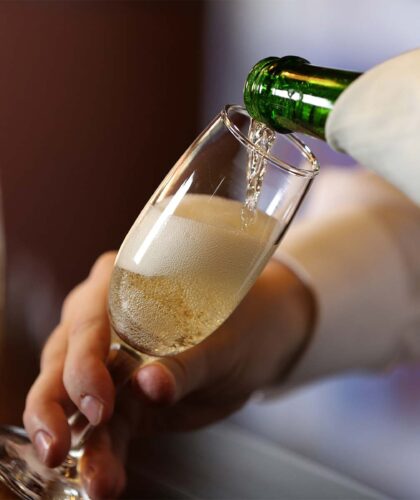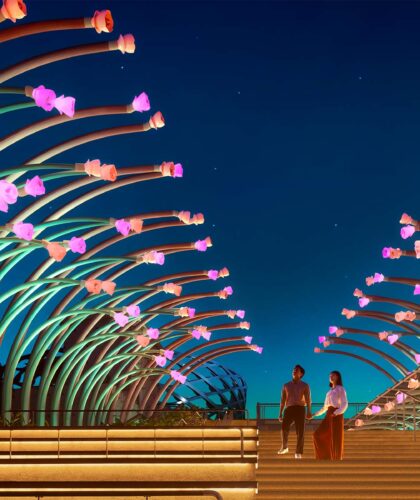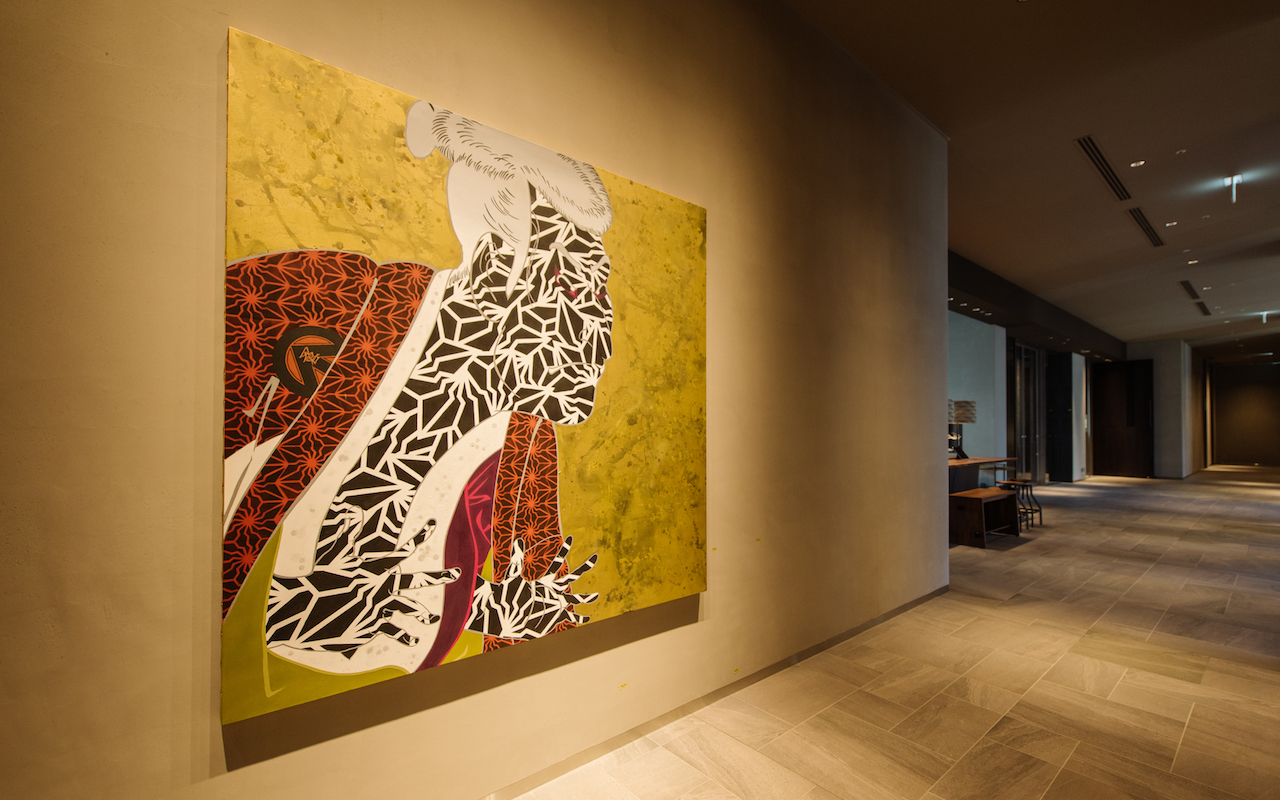
1. Traditional rebellion
The hotel – which marks the Pullman brand’s first foray into Japan – takes its design cues from the classical dance-drama kabuki. In the Edo period, kabuki stage actors were known for their provocative, edgy and artistic style. Using a colour palette based on the colours of kabuki makeup – white, red, blue and purple – the décor throughout the hotel blends a clean, modern style with Japanese accents, such as the calligraphy-inspired painting on the ceiling of the lobby bar. One of the most striking pieces of art is a large interpretation of an ukiyo-e (woodblock) print in the lobby: the famous portrait of a kabuki actor by master Sharaku is updated by artist BAKIBAKI, who overlays the actor’s face and clothing with a traditional asanoha (hemp leaf) pattern.
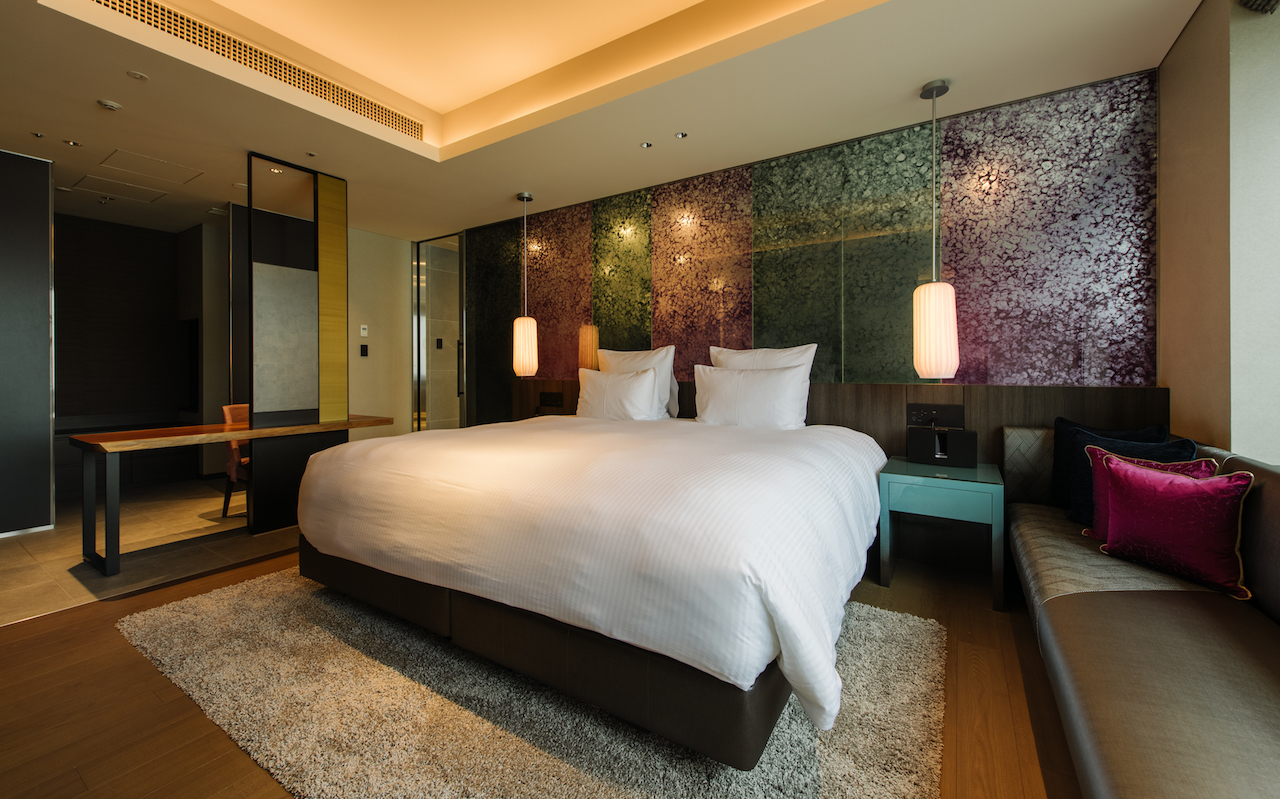
2. Penchant for paper
The hotel’s contemporary-meets-traditional design aesthetic continues on the guest floors. Halls are lined with muted ginpaku (silver leaf) alongside custom washi (Japanese craft paper) panels. In the rooms, special touches include black Spanish marble counters and custom-made Shigaraki (a type of stoneware) sinks; leather chairs with velvet cushions; and traditional fusuma (thick paper panels that divide rooms). Sculptural paper art reminiscent of origami also adorns the walls in certain rooms.
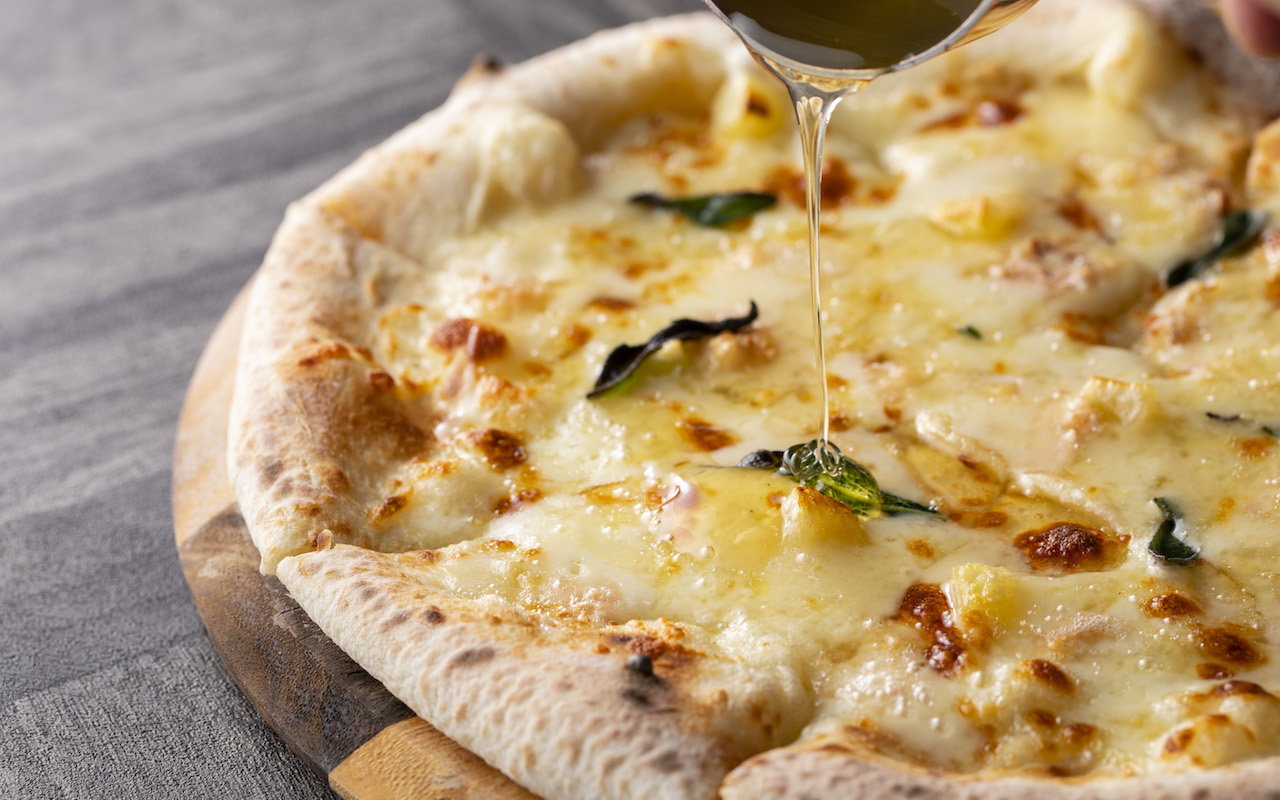
3. Mediterranean with an Asian streak
Signature restaurant KASA plays with two homonyms – the Japanese word kasa for umbrella and the Spanish casa for house. Indonesia-born, Australia-trained executive chef Thomas Thomas wants to bring people together in the space, creating a homey environment that is decorated with Japanese paper parasols and red-light fixtures resembling the frame of an umbrella. The Mediterranean menu incorporates Japanese ingredients and Asian techniques – think dishes such as grilled Australian sirloin with hatcho miso and whiskey sauce; kombu-cured king fish; and sakura-wood-smoked bacon.
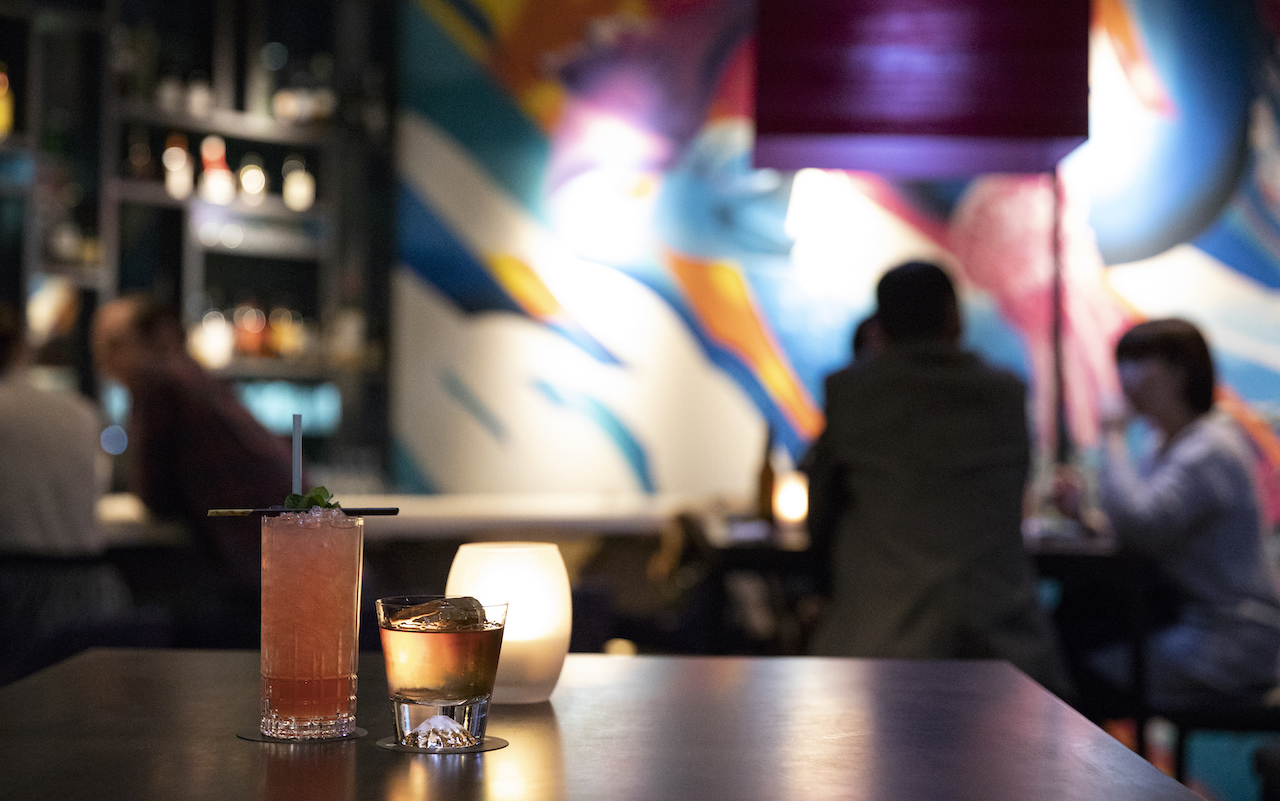
4. After hours
Upstairs at Platform 9 rooftop bar, the Mediterranean fusion theme continues, with tapas and cocktails served overlooking the train tracks below and the lights of the Rainbow Bridge shimmering in the near distance. On the wall of the bar, you’ll find a psychedelic ocean scene from Osaka-based graffiti-style muralists WHOLE9, who live-painted the piece at the bar’s opening party. In the Executive Lounge, guests can grab a nightcap next to a miniature Japanese garden.
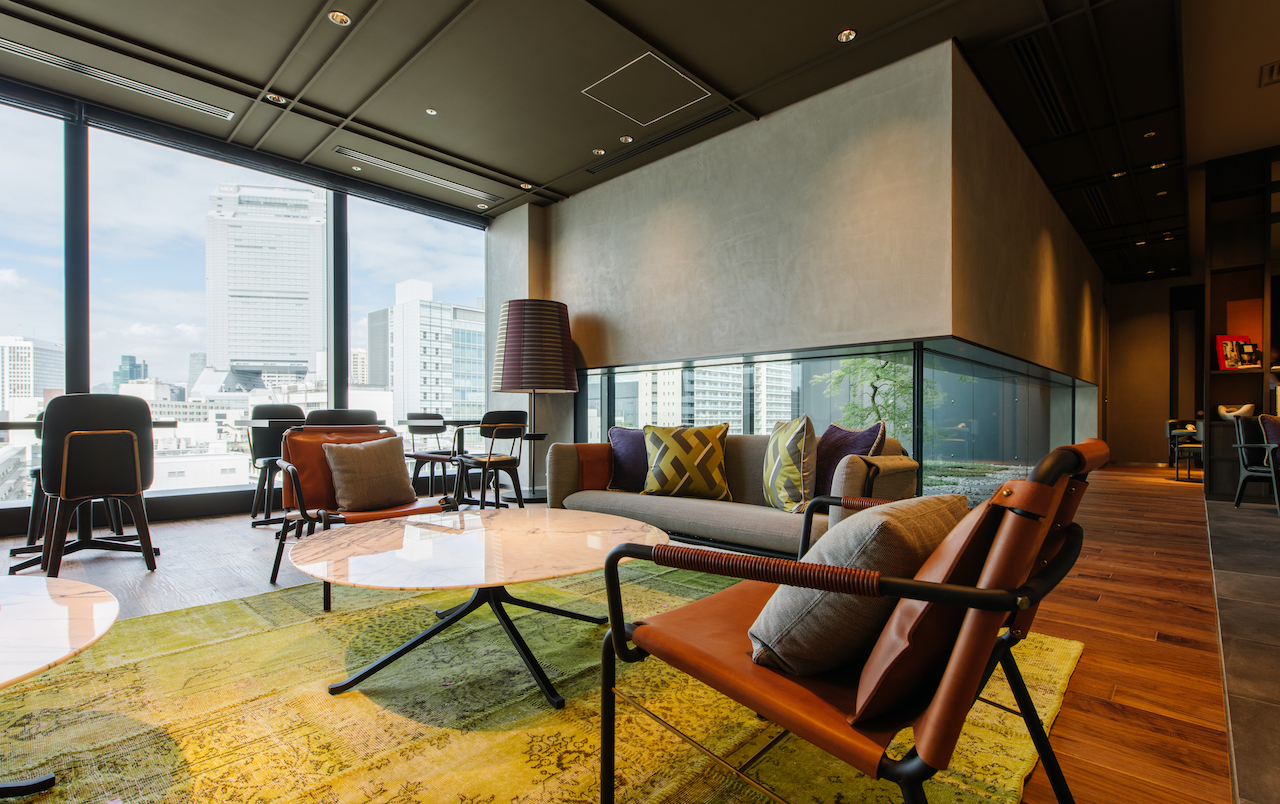
5. Rail connection
Pullman Tokyo Tamachi is directly connected by covered walkway (one-minute walk) to JR East Tamachi Station and overlooks more than half a dozen tracks. Shinkansen – bullet trains – whizz by regularly, soundless through the thick glass, and commuter trains chug reliably by. The hotel’s position on the central loop line of Tokyo, the Yamanote, also means that all of Tokyo’s main attractions and business districts are within easy reach.
Singapore Airlines flies to Tokyo six times daily. To book a flight, visit singaporeair.com
SEE ALSO: Art on a plate: 5 places to enjoy kaiseki in Tokyo
This article was originally published in the May 2019 issue of SilverKris magazine

